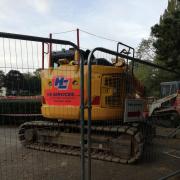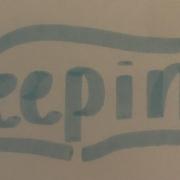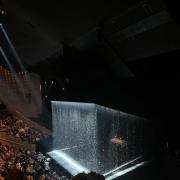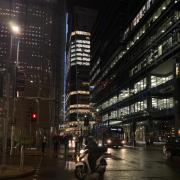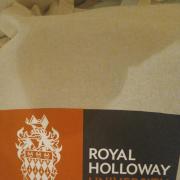
Every day that passes I seem to find myself learning something new. Sometimes it’s simple and mundane things like learning Shakespeare never once signed his name with the same spelling we use today or finding out that my dad has double jointed thumbs. But at times my learnings reveal the ignorance I have of our world and the trouble and strain its gone through due to human intervention.
Of late I’ve found a new love for documentaries and one in particular hit me hard. After watching Stacey Dooley Investigates: Fashion’s Dirty Secrets I knew I needed to do my own research. Being a big lover of all things clothes the very title of the documentary drew me in, but what I watched was not what I expected. After learning the fashion industry is one of the main industry’s contributing to the pollution of the earth, second only to the oil industry, I was prepared to start my wardrobe a fresh and begin buying and wearing clothes made entirely of good, earth friendly products and materials. But perhaps throwing away the old and starting from scratch isn’t a solution, we can’t very well throw the earth we have away and start from scratch…we have to work with what we’ve already got (just like my wardrobe). The real deeper causes that have led to global warming and climate change do not lie folded up in my chest of draws, but in the factories that distribute toxins into the air, promote slavery and the exploitation of humans and the transaction of cheaply made goods. But my main focus is not these factories… but the environment they routinely infect and destroy. In particular, a space of land 2,697 miles from where I sit now; where once held the fourth largest sea on earth but now resembles a desert and a narrow strip of contaminated water squashed between Kazakhstan and Uzbekistan…The Aral Sea.
Indeed the real feature of the documentary that caught my interest was the shrinking of the Aral Sea and I couldn’t wait to learn more about its tragic history; which had been deemed ‘one of the planet’s worst environmental disasters’ and over the past 50 years the seas area has dropped to 25% of its original size and only 10% of its initial water volume, the entirety of the eastern basin had now become the Aralkum Desert. The Aral Sea was once an endorheic lake, meaning a lake that allows no outward flow. It is situated between Kazakhstan in the North and Uzbekistan in the South. The name roughly translates to ‘Sea of Lands’ this is in reference to the 1,100+ islands that were once scattered in its waters.
However this vast sea is no longer. A basin that once spread over an astounding 26,000 square miles has been deplenishing ever since its Soviet takeover in the 1960s. The soviets five year plans included redirecting the two rivers that fed into the Aral Sea; the Amu Darya (South) and the Syr Darya (East). To do this poorly built canals were used that had not been waterproofed and were apt to leak or break. This was done in the purpose to irrigate the surrounding deserts so that more produce could be grown there in the form of melons, rice, cereals and above all cotton or ‘white gold’. It was in the hope that this area could become one of the world’s biggest exports and so it did, temporarily, in 1988 Uzbekistan was the world’s biggest exporter of cotton and as of 2006 it accounted for 17% of exports. The cotton industry was now capable of producing tens of millions of tonnes of cotton to an industry worth billions of pounds. Despite this, there is now a lack of natural resources need to create cotton so businesses have turned to polystyrene; who’s production is predicted to triple by 2025. Despite the thousands of Soviet controlled labour jobs available, the bustling fishing industry already had over 40,000 workers and produced one-sixth of the Soviet Union’s fish supply but now the once thriving fishing harbour lies hundreds of miles away from the original shore. The new regime of the area led to forced labour and masses of unemployment as well as huge environmental damage. Due to crop rotation not being used, masses of pesticides and fertilisers were used on the depleted soil, the large use of toxins and water to replenish the crops led to the evaporation of the nearby Aral Sea. The decline of the Aral Sea and the decimation of its fishing village and industry came to no surprise to the Soviet Union, who had expected its disappearance; the evaporation had been inevitable. However in the 1960s a large-scale canal system scheme had been developed upon the intention to refill the Aral sea, yet the project was abandoned by Russian authorities in 1986 due to its staggering costs and a negative public opinion.
The sea split in two during the 1980s and further divided in 2003; this was caused by the bottom waters of the deeper parts of the sea being saltier on top and not mixing, the hot summers triggered the sea to evaporate faster. However, the construction of an 8-mile dam had already been approved in the 90s in attempt to replenish the sea after the water levels had fallen 72 feet and the World bank had sanction the 86 million dollar Kok- Aral Dam to be built. The dam opened in 2005 and by 2008 some restoration had already taken place: water levels rose by 12 meters and the smaller Northern Aral sea had increased by 68 percent, salinity had dropped and sufficient numbers of fish had populated the sea. As well as the dam being built, five countries that neighboured the Aral sea pledged to each give 1% of their budgets every year to help recover the sea.
It is not just the environment that has been effected but the people too. Huge plains were left unattended for weapons testing and industrial projects, as well as pesticide and fertiliser runoffs which left the land unsafe; resulting in the substances forming wind-born toxic dust which has spread across the region, causing dusts storms and dramatic changes in the weather. The area is prone to brutally hot summers and harsh, cold winters. Salt is deposited over large spaces of land and at times if anyone enters the water they are coated in a thick, white layer of salt over the body. The people living in these areas have been lacking fresh, clean water since the shrinking of the sea, as well as health problems-mainly regarding respiratory illnesses such as Tuberculosis, cancer, digestive disorders, anaemia and liver, kidney and eye problems. Mothers are largely advised not to breast feed and the mortality rate for new-borns is 75 in every 1,000 and 12 in every 1,000 for their mothers.
But hope remains! Despite the Aral sea being dried up for the first time in 600 years, it’s believed it has been deplenished of water and restored twice previously. Attempts now to replenish the Aral Sea to its natural state include: improving the quality of the irrigation canals, using alternative cotton species (and other textile materials) that require less water and use fewer chemicals, promoting non-agricultural development in upstream countries or cultivating alternate crops rather than cotton and pumping water taken from the nearby Caspian Sea into the Aral Sea via pipelines that also dilute the sea water with fresh water from local areas.
For those of us at home; raising awareness and looking more carefully into what we buy, the materials used and in what conditions or territories they were put together in should contribute to whether or not it’s a worthy buy. Save the world one more time and think about the effect your outward actions will have on the environment and the impact it would make to take a another second to do a job properly.







